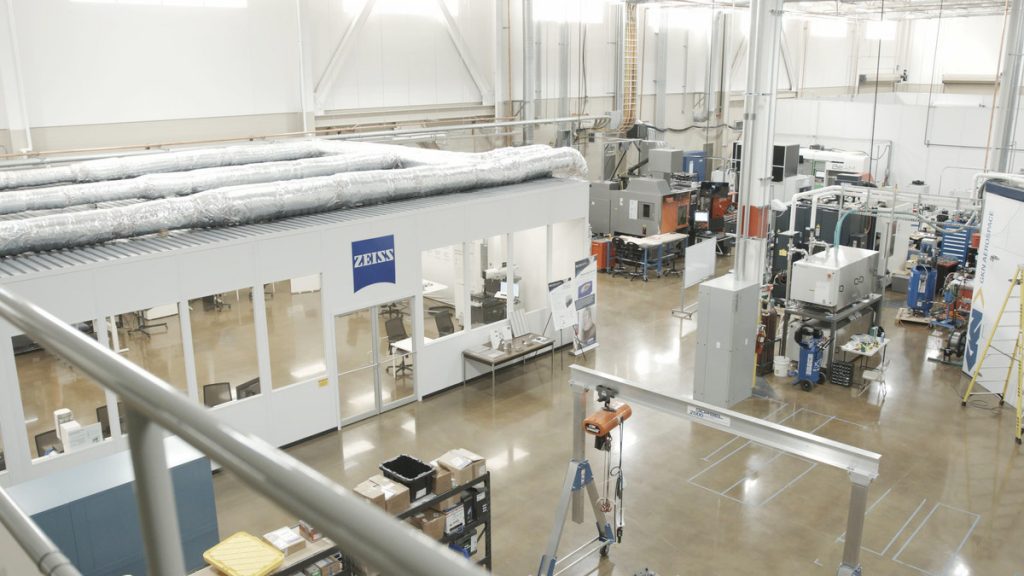The nominations for the 2021 3D Printing Industry Awards are now open. Who do you think should make the shortlists for this year’s show? Have your say now.
Carl Zeiss Industrial Metrology (ZEISS), a leading manufacturer of multidimensional metrology devices, has partnered with the Department of Energy’s Oak Ridge National Laboratory (ORNL) to advance the characterization of 3D printed parts using artificial intelligence (AI) and X-ray CT technology.
The joint project, named “Leveraging Artificial Intelligence to Enable Reliable Non-Destructive Characterization of Additively Manufactured Parts Using X-ray CT”, will be funded through the DOE’s Technology Commercialization Fund (TFC).
ZEISS and ORNL are set to develop and commercialize an AI-based powder-to-part characterization methodology for 3D printed parts using the ZEISS 3D ManuFACT Solution – a comprehensive integrated inspection workflow. The methodology will be used to rapidly qualify new alloy powders and processes, enabling the streamlined qualification of 3D printed components.
“We want our X-ray CT machines to be able to drive AM processes toward printing consistent, predictable, and repeatable parts,” says Dr. Pradeep Bhattad, Business Development Manager for Additive Manufacturing at ZEISS. “Due to the complexity of AM parts, X-ray CT is increasingly becoming the preferred technology to qualify the parts. However, AI-based X-ray CT has the potential to revolutionize non-destructive testing (NDT) and metrology beyond just the AM industry.”

Part reliability in additive manufacturing
As 3D printing processes increasingly become a part of the industrial production chain in sectors such as aerospace, healthcare, and automotive, the verification of part reliability becomes more integral than ever. As a characterization method, X-ray CT is particularly potent due to its ability to provide insight into the processing, microstructure, and material properties of 3D printed parts. ZEISS’ 3D ManuFACT process includes several advanced CT characterization tools such as ZEISS Versa, ZEISS METROTOM, and ZEISS VoluMax.
Unfortunately, X-ray CT still suffers from artifacts and noise, mainly due to beam hardening and scan time reductions for dense metal materials. The partners believe they can reduce the artifacts and noise significantly through the use of AI, all while improving defect detection capabilities and reducing scan times by up to a factor of six.
ORNL has already developed an AI algorithm to complement ZEISS’ imaging systems, one that improves the CT scanning process by leveraging existing 3D CAD models and physics-based data. The algorithm trains a deep convolutional neural network (CNN) capable of removing the noise and artifacts from synthetic CT data, and applying the trained network to real experimental CT data.
Dr. Amir Koushyar Ziabari, R&D staff scientist at ORNL, explains, “The AI-based technology enhances X-ray CT capabilities, producing fast and high-quality images with significant improvement in noise and artifact suppression, thus improving the accuracy of measurements.”
The three-phase roadmap
Dr. Ziabari’s team have outlined a three-phase R&D plan for the first year of the project. The first phase will involve the testing and evaluation of the algorithm on a series of real datasets. Phase two will translate the proposed methodology to a range of samples and multi-material structures, while phase three will involve the documentation and development of the final user interface and modeling verifiable by ZEISS.
At the end of the first year, the project partners expect to be able to quantify the improvement in the AI methodology’s porosity detection capabilities.
Ziabari concludes, “Our ultimate goal is to further develop and mature this technology so that it can be commercialized and adopted into the broader X-ray CT market.”
The use of ML and AI in additive manufacturing is broad, with applications beyond just part characterization and defect detection. Geometric deep learning specialist Physna has previously launched a geometric search engine based on machine learning – Thangs. Instead of scanning for text or images, Thangs uses deep learning algorithms to index 3D models based on the polygons, or triangles, that make up their volumes. Physna has since raised more than $86M in venture capital funding.
Elsewhere, engineering firm Renishaw has partnered with robotics specialist Additive Automations to automate 3D printing support removal using deep learning. The companies expect the project to reduce average part costs by up to 25%, making additive manufacturing a more feasible and cost-effective high volume production method.
Subscribe to the 3D Printing Industry newsletter for the latest news in additive manufacturing. You can also stay connected by following us on Twitter, liking us on Facebook, and tuning into the 3D Printing Industry YouTube Channel.
Looking for a career in additive manufacturing? Visit 3D Printing Jobs for a selection of roles in the industry.
Featured image shows a Carl Zeiss Industrial Metrology facility. Photo via ZEISS.



